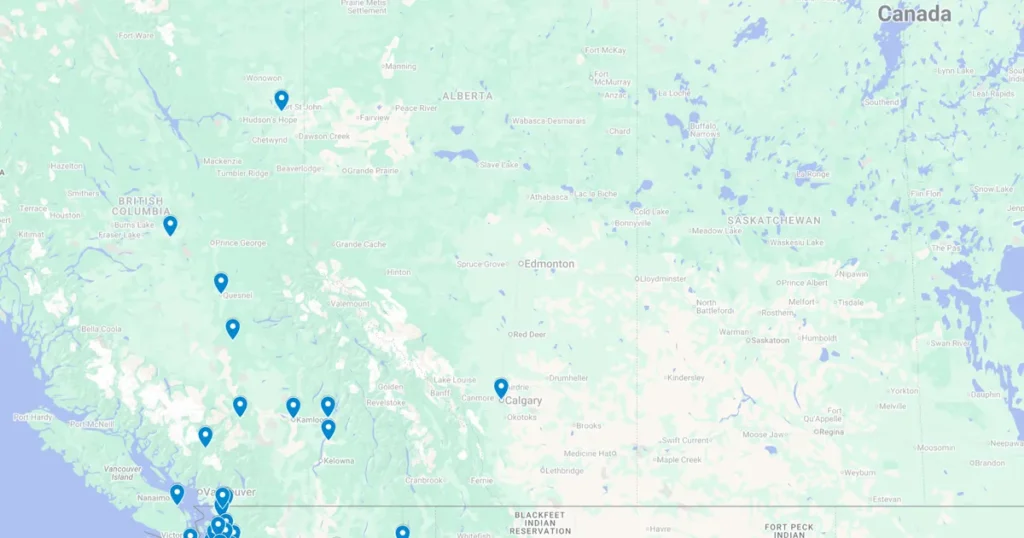The trade relationship between Canada and the United States has always been close—but not always smooth. As economic pressures and tariff tensions rise between the two countries, many Canadian municipalities and private water system operators may be wondering: Can we still reliably access U.S.-made water treatment systems without incurring excessive costs?
The answer is yes—and now more than ever, working with a U.S. supplier like ATEC Water Systems continues to be a sound decision for Canadian water utilities managing groundwater contaminants like iron, manganese, PFAS, arsenic, chromium, nitrates, and ammonia.
That’s because fully assembled water treatment systems like those made by ATEC are not subject to the recent tariff hikes applied to certain raw materials or industrial categories. Under the United States–Mexico–Canada Agreement (USMCA), completed filtration and purification systems—classified under HS Code 8421.21—remain duty-free when exported from the U.S. to Canada. These systems are not considered at risk under steel or aluminum tariffs, making them a dependable and economically sound choice for Canadian utilities, even in times of trade volatility.
Let’s unpack the current landscape and explore why ATEC remains a trusted partner north of the border—even in times of economic and trade uncertainty.
ATEC offers Canadian buyers several key advantages:
1. Cost-Effective Lifecycle Value
ATEC’s systems are known for delivering one of the lowest total lifecycle costs in the industry. With pre-engineered, modular skid systems that minimize site work and simplify installation, utilities can implement treatment faster and with lower capital and operating expenses.
This becomes especially important in Canada’s mid-size and rural water systems, where budgets are constrained and staffing is lean.
2. Treatment for Multiple Contaminants
Canadian provinces are increasingly looking to tighten regulations around contaminants like iron, manganese, and nitrate, as well as emerging threats like PFAS and chromium-6. ATEC provides treatment technologies that are proven in the field and adaptable to site-specific water chemistry, allowing utilities to address multiple contaminants with minimal operational complexity.
3. U.S.-Made Systems Built with U.S. Steel
ATEC’s treatment systems are manufactured in the United States using U.S.-origin steel and materials. That not only ensures tariff compliance under USMCA, but also means Canadian buyers benefit from high-quality materials and traceability—a growing concern in the water sector.
4. Proven Track Record
ATEC has more than 350 systems installed across North America, including multiple deployments in Western Canada. This track record builds confidence for utilities and engineers looking to specify proven technologies that meet Canadian climate, regulatory, and operational standards.

Navigating Cross-Border Procurement: What Canadian Buyers Should Know
For utilities or contractors concerned about logistics or paperwork, here’s the good news: Importing ATEC systems into Canada is straightforward.
Here’s how the process typically works:
- ATEC issues a commercial invoice with all required product, pricing, and country-of-origin information.
- HS Code 8421.21.0000 is used for classification.
- A USMCA certificate of origin (or equivalent statement on the invoice) confirms duty-free eligibility.
- The buyer (or freight forwarder/customs broker) ensures any applicable GST or provincial taxes are paid upon import.
There are no hidden costs, no opaque customs issues, and no unexpected surprises—especially when working with experienced partners on both sides of the border.
Economic Pressures Are Real—But So Is the Risk of Delay
Given inflation, labor shortages, and rising material costs, some utilities may be tempted to delay water treatment investments. But the reality is that groundwater quality is not improving on its own—and in many areas, contaminant levels are worsening due to agricultural runoff, aging infrastructure, and legacy pollution.
- Delaying action often leads to higher future costs, including:
- Emergency capital expenditures when systems exceed regulatory limits
- Increased public backlash from water quality complaints
- Higher O&M costs from scaling, corrosion, or filtration inefficiencies
ATEC’s systems offer an affordable path to proactive compliance, helping utilities avoid these avoidable risks—while taking advantage of favorable U.S.–Canada trade terms.
Supporting Canadian Engineering and Procurement Teams
We recognize that each province, and each utility, has its own processes and design standards. That’s why ATEC works closely with Canadian engineering firms and local representatives to ensure:
- Treatment systems align with local codes and climate conditions
- Pilot testing or modeling can be conducted when needed
- Installation support and operator training are available
We’re also happy to support RFQ/RFP processes and provide design documentation as needed to support Canadian procurement.
Final Thoughts: ATEC is Ready to Support Canadian Groundwater Projects
As Canadian communities continue to face groundwater challenges, it’s more important than ever to have reliable, scalable, and cost-effective solutions on your side.
ATEC is committed to serving Canadian water utilities with:
- PFAS removal
- Iron and manganese filtration
- Nitrates
- Hexavalent chromium treatment
- Arsenic
- Boron
Modular, affordable systems that meet today’s—and tomorrow’s—standards
And despite trade uncertainty in other sectors, we’re proud to say that our Canadian partners can continue to access our systems tariff-free and with full support under USMCA.
Whether you’re planning a new wellfield, replacing aging filtration equipment, or preparing to meet new regulations, ATEC is ready to help.
Interested in discussing your groundwater treatment needs?
Contact us today to talk with our team that has shipped multiple systems to Canada in our 30 years of operation.